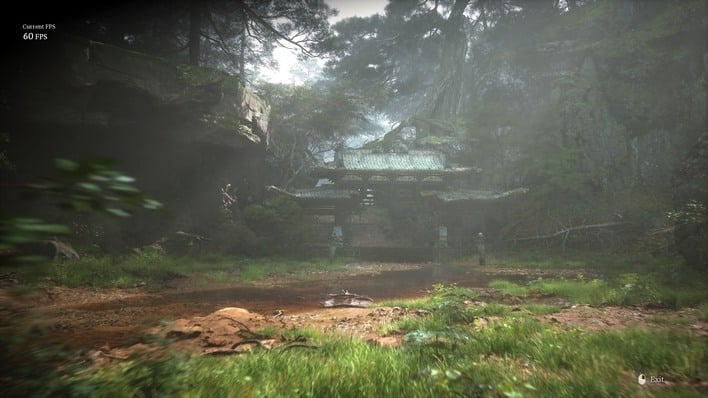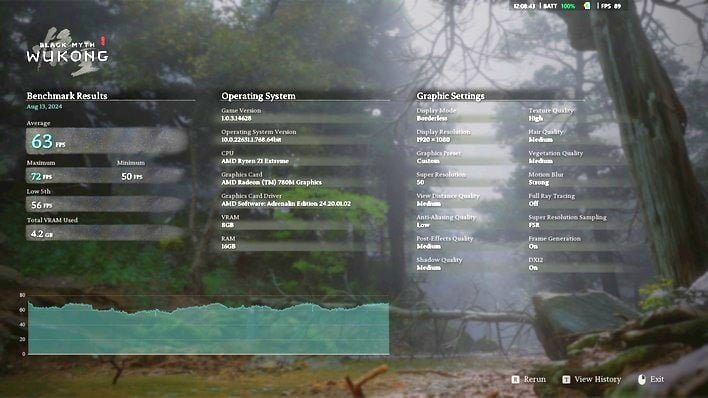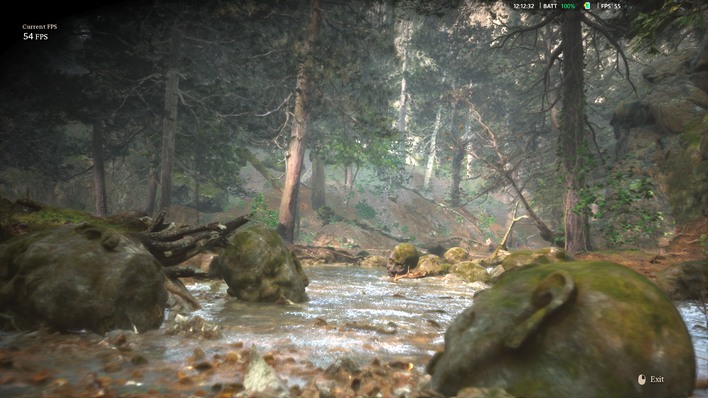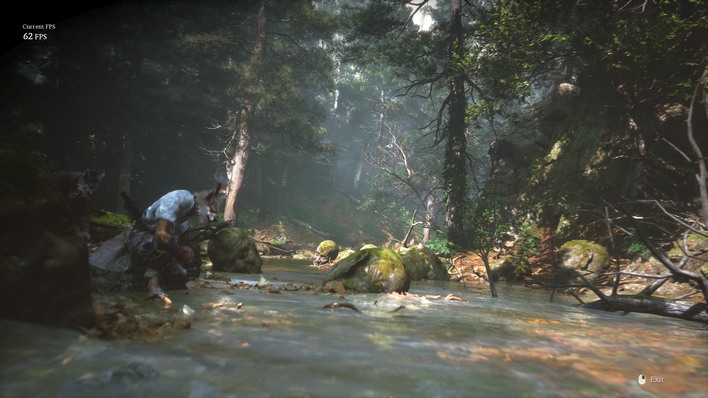Black Myth: Wukong Official Benchmark Brings Beautiful Ray-Traced Visuals To Steam
Notably, the Black Myth: Wukong benchmark also supports a variety of upscalers, including NVIDIA's DLSS, AMD's FSR3, Intel's XeSS, and Epic's own TSR. Using DLSS, FSR3, or TSR gives you the option of enabling frame generation; it's not clear what frame generation technology is used along with TSR, but we'd suspect that it's probably FSR3, as AMD has specifically engineered that technology to work along with any upscaler.
On the bottom end of things, we tested the game on the ASUS ROG Ally X. The game itself recognizes the integrated GPU and recommends some pretty modest settings: the "Low" graphics preset and a "Super Resolution" value of 66%, correlating with FSR3 "Quality". Using those settings, including FSR3 Frame Generation, we get a result of 65 FPS average with lows in the 60 FPS range. That's perfectly acceptable performance, although it's not completely clear how much of that is coming from frame generation.
The keen-eyed among you might have noticed that the settings in the shot above don't match what we just listed. That's because we elected to manually fiddle with the settings a bit and came up with something that we think looks a little better while offering nearly the same performance. You can see the settings in the screenshot above. For fun, we tried to enable ray-tracing on the Ally X but it just wasn't worth the performance hit.
On a Radeon RX 7700 XT, the game recommended a 1080p render resolution, meaning "100% Super Resolution" on a 1080p display, and 75% on a 2560×1440 display (giving a 1080p render resolution.) We tested using 1920×1080 native resolution with 100% FSR3, which enables "Native AA" mode, using the FSR algorithm to perform temporal anti-aliasing. Then we raised the recommended settings preset from "High" to "Very High". This gave very nice visuals while giving a solid 76 FPS average.
However, attempting to use the "Full Ray Tracing" option on the RX 7700 XT was still basically a no-go. You could potentially get it working by using a high degree of FSR or TSR upscaling, but we really don't think the visual upgrade is actually worth it.
That's not to say that the ray-traced graphics aren't absolutely gorgeous, though. On the author's personal system with a Ryzen 7 5800X3D and GeForce RTX 4080, the game recommended "Cinematic" quality straight off—albeit with a 50% DLSS resolution scalar, equivalent to "Performance" mode. Interestingly, the recommended settings don't seem to take into account ray-tracing either way. We enabled "Very High" for the Full RT setting, and then also cranked up the resolution scalar to 57%, equivalent to DLSS "Balanced" mode.
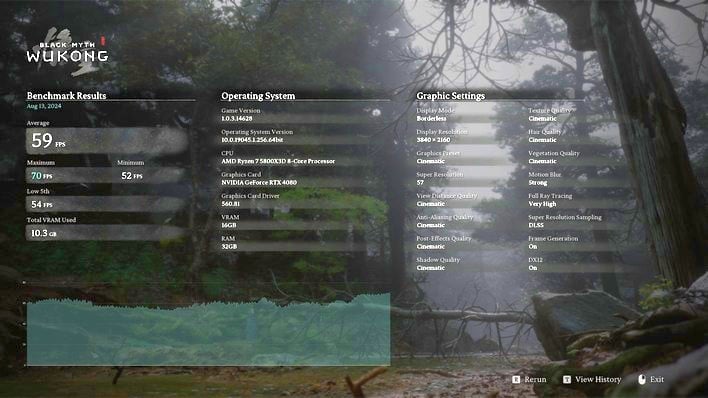
That gave us the gorgeous results above, and a quite playable framerate, too—at least, for this benchmark. You see, we have a complaint with the Black Myth: Wukong benchmark, and that's that it is simply a pass through a lovely natural environment. There is no combat nor indeed anything we could call gameplay-adjacent in the benchmark. As a result, we're a little dubious that this test will actually represent performance in the final game.
Still, if you're curious, or if you simply want to see your expensive GPU crank out some bleeding-edge visuals, you can snag the Black Myth: Wukong official benchmark for free on Steam—and only on Steam. Despite that the game is coming to the Epic store, the benchmark isn't available there.

